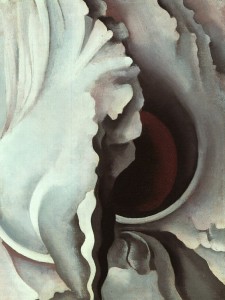
Tints of the 12 step color wheel
And the color blog returns with monochromatic color, and how to identify it!

Shades of the 12 step color wheel
This is possibly one of the easier color schemes to master, as it only uses one color. The word monochromatic is fairly self explanatory. For those unfamiliar with the term, it means one color. If you break down the word, you can remember it: mono meaning one, and chroma meaning color. Literally, one color.
In color theory, we use two other words that will help you understand how to execute monochromatic color schemes: tint, and shade. A tint is when white is added to a pure color. A shade is when black is added to a pure color. Obviously, you can either add a lot of white to get a very pale color, or a lot of black to get a very dark color, with all the variations in between. Additionally, just for reference today, a tone is when you add grey (black + white) to a color. It produces a more muted result.
In order to achieve a monochromatic color palette, all one has to do is stick with various tints and shades of the same color.

Monet’s monochromatic study of the winter
Monet’s The Magpie is a study in monochromatic color. It is a scene in winter, and it makes me think about just how monochromatic the winter season is here in Boston. Additionally Georgia O’Keeffe’s Black Iris III shows another view on monochromatic color.

Georgia O’Keeffe’s Black Iris III
Monochromatic color schemes tend to be very soothing when done in neutral colors or pale tints. They can be exciting, however, if one utilizes a bold color like violet or magenta. You can do all shades and tints of magenta and it can be a very visually exciting experience. Beauty is in the eye of the beholder, as they say.